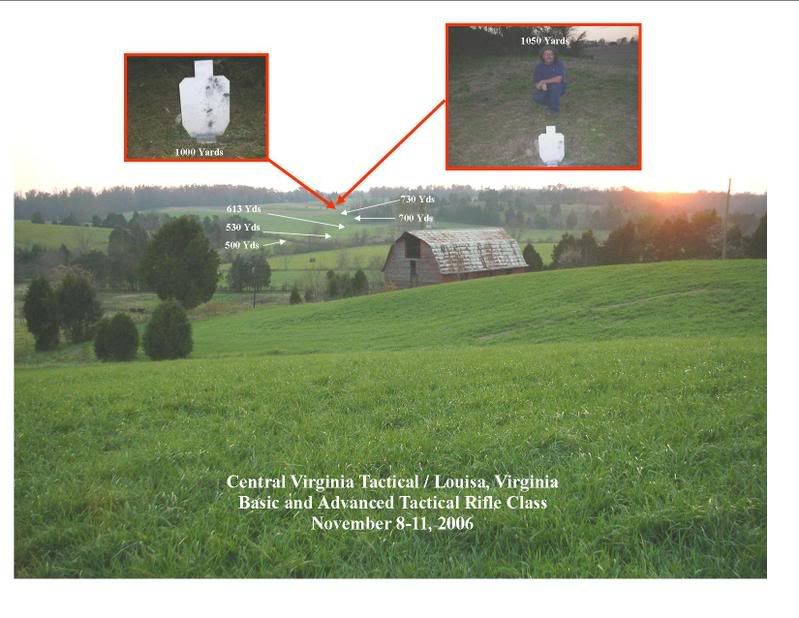Re: Rings?
<div class="ubbcode-block"><div class="ubbcode-header">Originally Posted By: Mike</div><div class="ubbcode-body"><div class="ubbcode-block"><div class="ubbcode-header">Originally Posted By: EventHorizon</div><div class="ubbcode-body">OK Mike, I'll try and make this simple. If you read carefully the whole sentence referencing optics the point is your previous optic worked well enough for you to put shots on target so by upgrading you broke your own (flawed) logic of sticking with what 'works' great.
<span style="font-weight: bold">No, that's not how it works. Say for example I shoot a Unertl. It's 30 year-old technology with a simple mildot and BDC knob. Now I've shot with it for years and it works marvelously. But is there something better out there? I'm not upgrading from one Unertl to another. I am upgrading for specific technological advances that aren't available on my current Unertl One can upgrade scopes for a multitude of reasons. Reasons that are far beyond marketing hype. For example, there are reticles. There are turrets matching reticles rather than mix-matched a la Leupolds. There is even variable vs. fixed power. Those are technological upgrades that go beyond "staying with what works". How a set of rings holds a scope is not on that same level. We are talking about a clamp (again ARC's words) holding a tube.</span>
500 ft lbs.... who made this claim? I don't remember doing so. Perhaps you're the one using false hype and exaggeration to make a point.
<span style="font-weight: bold">I find this question funny. Who made this claim? ARC. It comes directly from their website
http://americanrifle.com/scope_rings/default.asp?d=2</span>
You clearly don't know the value proposition of the ARC rings.
<span style="font-weight: bold">"Value Proposition" is so full of sales hype I am laughing out loud. I use that term every day. </span>
Yet you feel entitled to state facts about what they are or are not.
<span style="font-weight: bold">Actually I am stating opinion based on logic and experience. You, on the other hand, are trying to force your opinion on us as fact.</span>
That again is something you would need to rectify once you decide it's worthwhile to speak on matters which you're reasonably informed on.
<span style="font-weight: bold">I can assure you I am very well informed.</span>
Badgers may work well for you. Wonderful. For others they have not. As the owner of ARC pointed out in a dialog with Frank, the point of ARC rings is to eliminate this 'crap-shoot' of working for one person and not another.
<span style="font-weight: bold">So in this statement you claim ARC told Frank "the point of ARC rings is to eliminate this 'crap-shoot' of working for one person and not another." Basically implying he's trying to make his rings fool-proof. So his rings will never break, they will never have a problem, and every person will be able to mount them without a single issue? Oh, and they will never mark or score a scope body? Everything that is manufactured has the potential for having an issue. If it's happened to the users of Badgers, USO, Seekins, et al, I guarantee it will happen with ARC.</span>
I don't see any point in discussing this further with you seeing as you'd rather defend a position of incomplete knowledge than actually investigate what the ARC rings are about.
</div></div>
<span style="font-weight: bold">I'm completely open to what ARC rings are all about. But show me relevant fact and not market hype. Once you start from that position, I'm all ears. </span> </div></div>
Perhaps I can better inform your comprehension of what ARC says on the website:
<div class="ubbcode-block"><div class="ubbcode-header">Originally Posted By: ARC Website</div><div class="ubbcode-body">A force of 500 pounds* was applied at each screw location during the analysis to simulate the forces imparted by the screws.</div></div>
Note that it says 500 pounds, not 500 ft-lbs or even 500 in-lbs.
So here's how someone with an engineering background can calculate the applied force in a screw/bolt/fastener when a certain torque is applied.
Torque = K *F *D
K = frictional torque magnification factor due to thread conditions
F = axial tension force
D = Screw diameter
K ~ 0.15 as us shooters commonly apply torque to scope rings (unlubricated, annodized aluminum interfaced to steel)
For a steel on steel interface that number is closer to 0.1, and with a lubricated threads the steel on steel interface is 0.06-0.08
As you can see, the better the thread conditions the better the load will transfer.
When you put X ft-lbs of torque on a screw/bolt/fastener you don't get X lbs of torque. The whole point of using a helical ramp to apply force (aka a screw) is to magnify the force applied.
Therefore, if you put 25 in-lbs on a 1/4" bolt the following load tension force is generated in the bolt:
T = K F D
F = T/KD
F = 25 (in-lb)/(0.15*0.25in) = 666.666.... lbs
Let's take a look now at the 4mm screw that is in a clamp on the ARC rings set at 15 in-lb
D = 4mm = 0.1575"
K = 0.15
T = 15 in-lb
F = 15/(.15*.1575) = 634 lb
So, the 500lb value calculates into:
T = K F D = .15 * 500 * 0.1575 = 11.82 in-lb
Mike, do those numbers now make sense?




